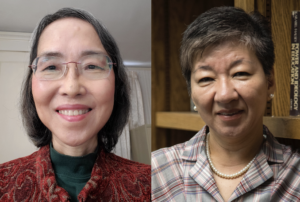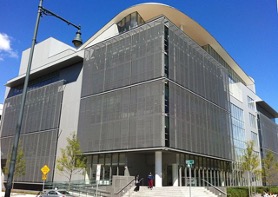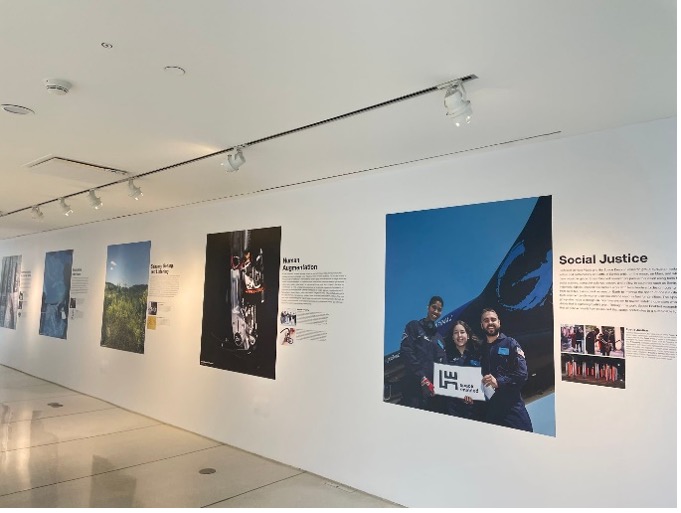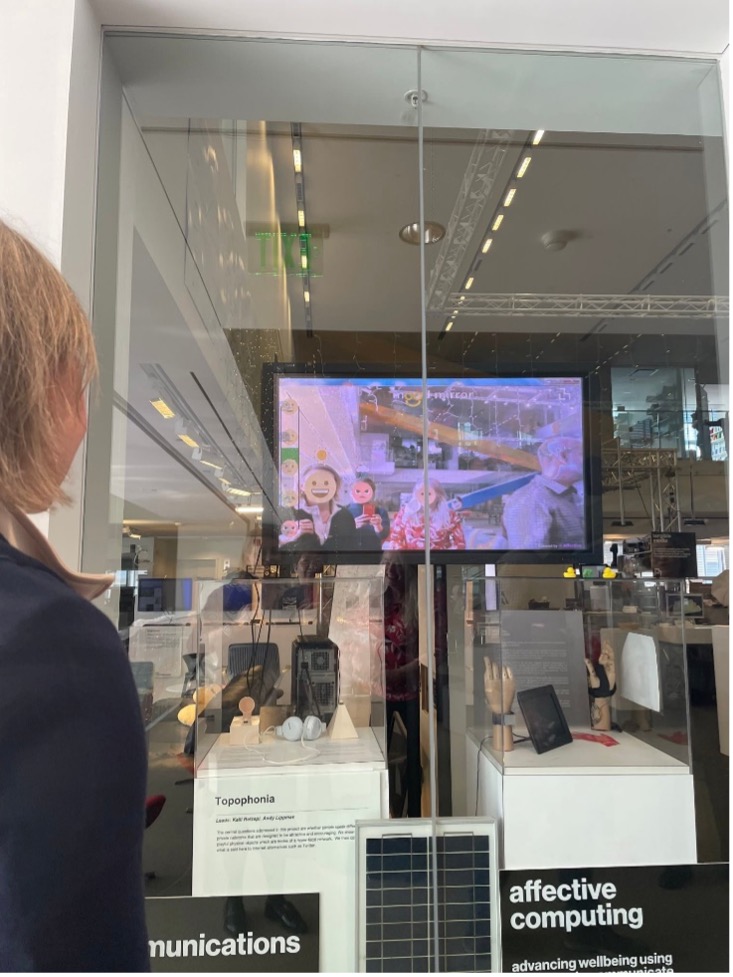
Visiting MIT’s Media Lab
What do artificial intelligence, machine learning, robotics, and other new media arts have to teach us about the teaching and learning of religious worldviews, imagination, and symbols? To find this out, a small group of scholars in religion and theology, funded by a Wabash Center Grant, visited the Massachusetts Institute of Technology’s Media Lab in the spring of 2022. They met with Professor Rosalind W. Picard, the founder and director of the Affective Computing research group at MIT’s Media Lab to learn about her latest work.
 The design and organization of the Media Lab offers insights into the habitus of learning and innovation. The glass building is futuristic looking, spacious, airy, and full of light. It contrasts with the nineteenth-century and more traditional architectural designs of some theological schools.
The design and organization of the Media Lab offers insights into the habitus of learning and innovation. The glass building is futuristic looking, spacious, airy, and full of light. It contrasts with the nineteenth-century and more traditional architectural designs of some theological schools.
On the first floor is a display of the history of landmark scientific discoveries and advances relevant to the work of the Media Lab. Throughout the building, there are posters providing information and celebrating the research done in the various labs. Researchers are welcome to join a tradition of discovery, innovation, and exploring the future.
The Media Lab facilitates the cross-fertilization of ideas by housing in one building labs that conduct research of different kinds: bioengineering, machine learning, sensors, cognition, environment, space, and computer science, etc. With glass partitions, researchers can see what is going on in other labs. They can visit other labs to consult their colleagues and learn about the latest developments in other fields. 
To recruit the brightest and most talented students, MIT raises funds to provide scholarships for its graduate students. We saw students and researchers of different nationalities and ethnic backgrounds working at the Media Lab.
The physical environment and habitus are important for teaching and learning. In Educational Imagination, Elliot W. Eisner differentiates between the explicit and implicit curriculum. The explicit curriculum is the actual contents taught in the classrooms and labs. The implicit curriculum is the environment and ethos that includes the ways the teachers teach and interact with the students.
It is obvious that the building and design of the MIT Media Lab, i.e. its implicit curriculum, tangibly embodies its educational commitment to collaboration and transparency. It generates curiosity and new imaginations that lead to collaborative possibilities. It also encourages members to embrace a culture of transparency and communal thriving rather than competency and secrecy. When the explicit and implicit curricula of an institution and its teachers are in sync, it is easier to generate a positive learning atmosphere that benefits the students.
Dr. Picard’s work on affective computing trains computers to recognize various human emotions. Picard’s team worked extensively with diverse people, including people with disabilities, to categorize human emotions in detailed and nuanced ways. Through this process, they have discovered how critical emotion is in the learning process. Positive affect such as awe, satisfaction, and curiosity contribute to constructive learning, while negative affect such as frustration, disappointment, and misconception lead to un-learning.
 Theological educators have much to consider about the affect we create in students. In After Whiteness, Willie James Jennings criticizes the plantation style of educational institutions. The plantation style is hierarchical and is run by the racial paterfamilias. It requires teachers and students to enter into the affective reality of white, Western institutional life. The educational space is a space of thinking, but not feeling. Students learn different disciplines but are not given the opportunities to build with the institutions. Racial minorities and people with marginalized identities often find it hard to inhabit such learning spaces.
Theological educators have much to consider about the affect we create in students. In After Whiteness, Willie James Jennings criticizes the plantation style of educational institutions. The plantation style is hierarchical and is run by the racial paterfamilias. It requires teachers and students to enter into the affective reality of white, Western institutional life. The educational space is a space of thinking, but not feeling. Students learn different disciplines but are not given the opportunities to build with the institutions. Racial minorities and people with marginalized identities often find it hard to inhabit such learning spaces.
In a traditional classroom, the tables and chairs are arranged for students to listen to the professor’s lectures. Today, many professors incorporate the use of PowerPoint in their teaching. But students are still treated as passive spectators. Some professors rearrange the furniture of the room to facilitate small group discussions and interactions. What more can we do to encourage creative collaboration and co-learning?
Education is about the whole person. Thomas Groome, a prominent Christian religious education scholar, calls this an ontological activity as it involves people’s ontos, their very being. Christian education includes knowing Jesus in a personal relationship through faith, but it accentuates this relationship with the pursuit of justice; that is, how one practices justice, mercy, and love. Through informative, formative, and transformative activities, education seeks to complement people’s whole way of being in the world, including questions about who they are and how they live. If we take this aspect of education seriously, our understanding of the curriculum, including its scope and context, will need to be broadened. MIT’s Media Lab stimulates us to think about an embodied model of learning in theology and religion.
Leave a Reply